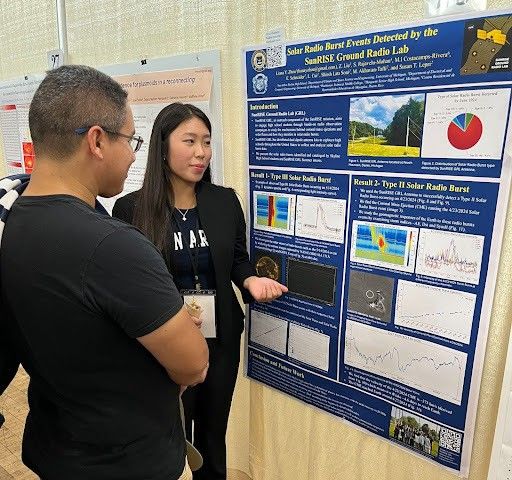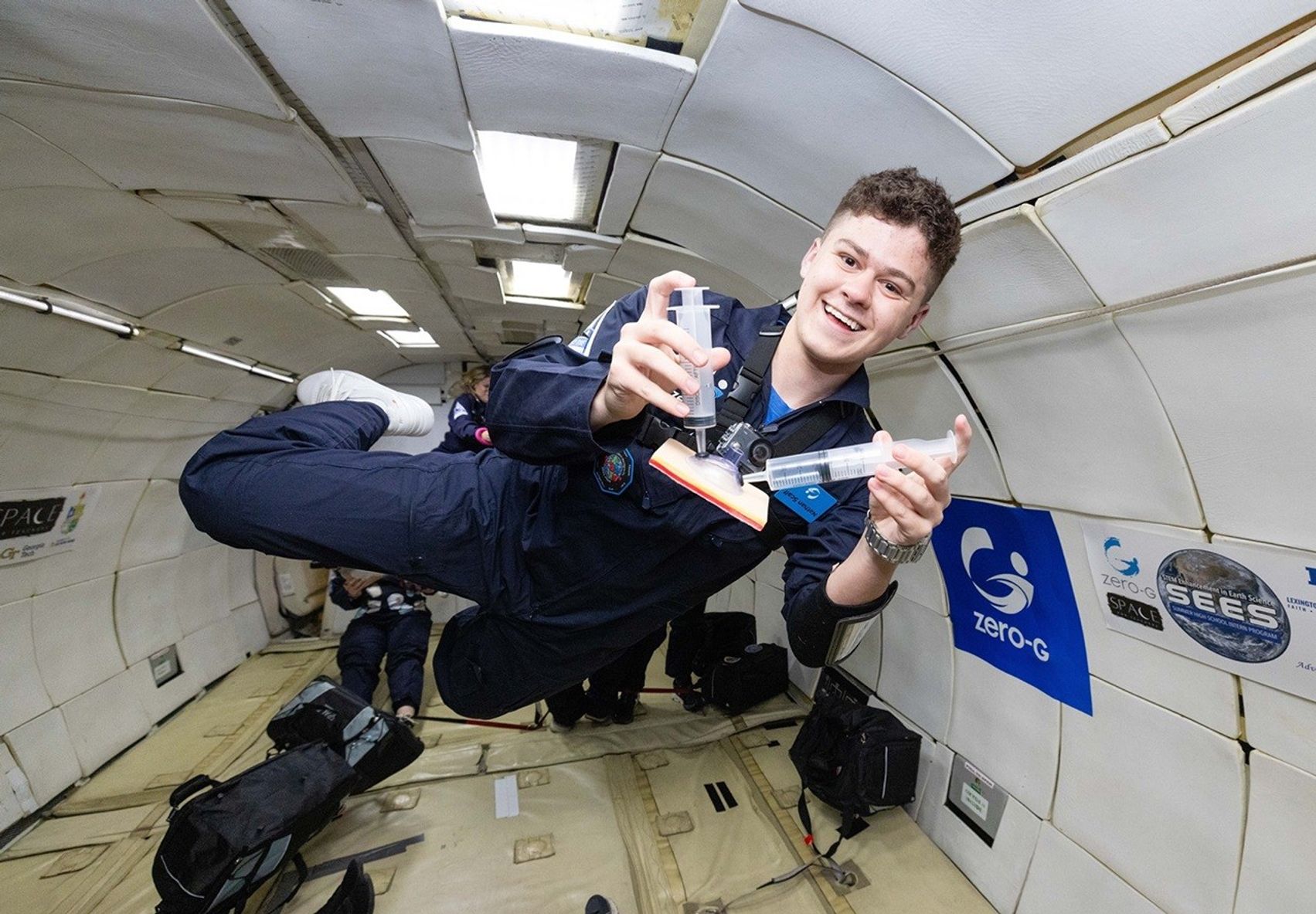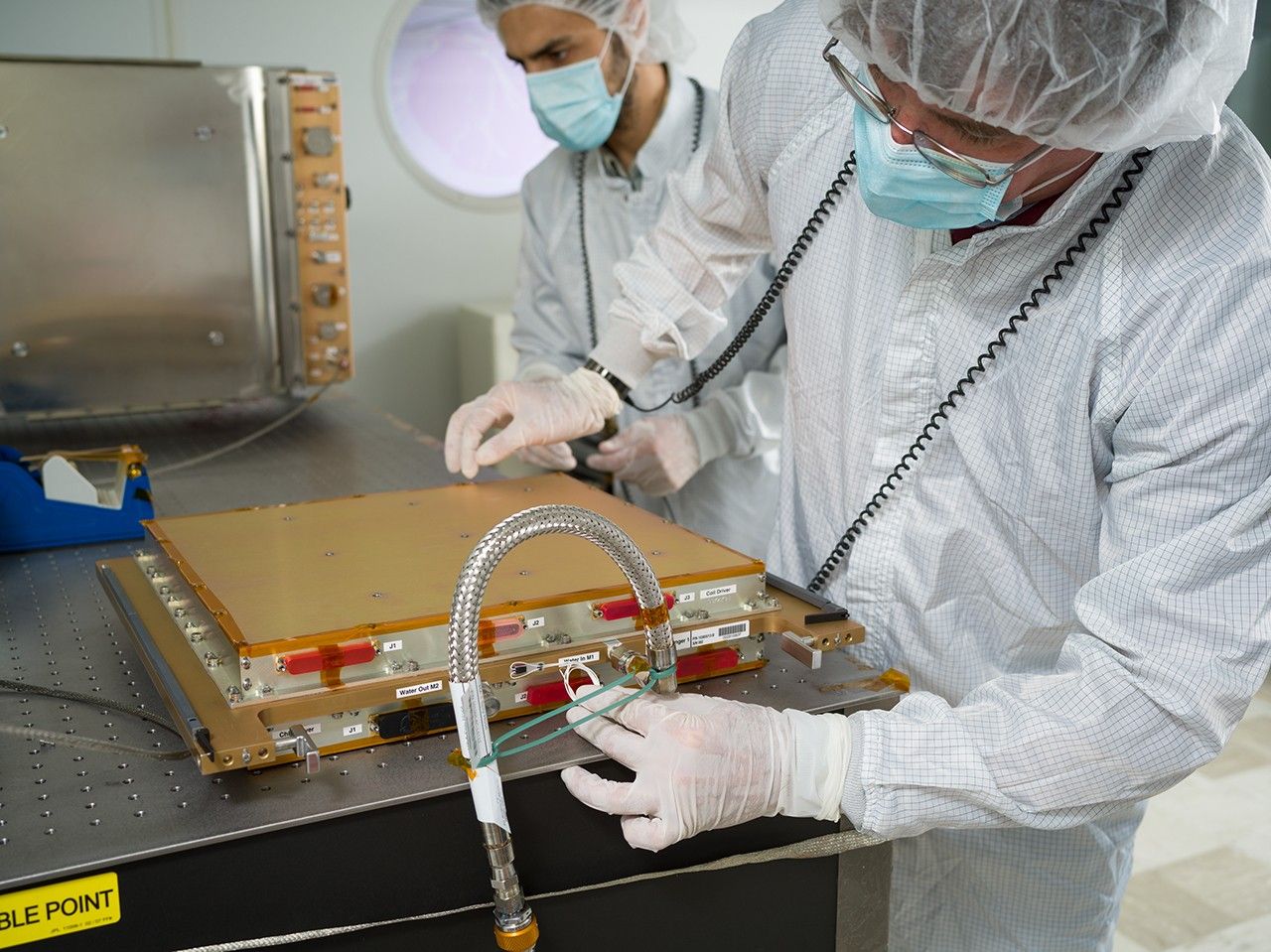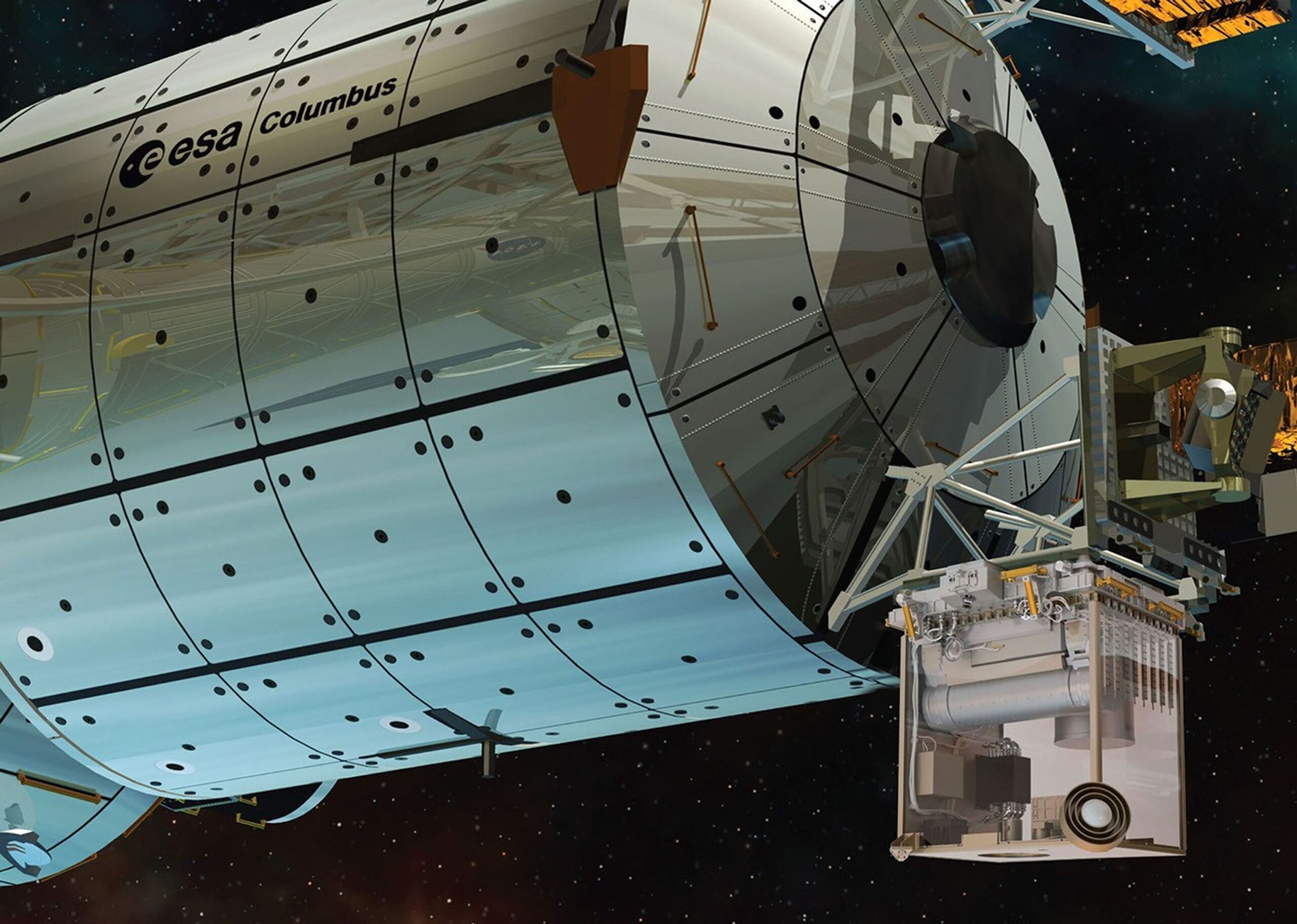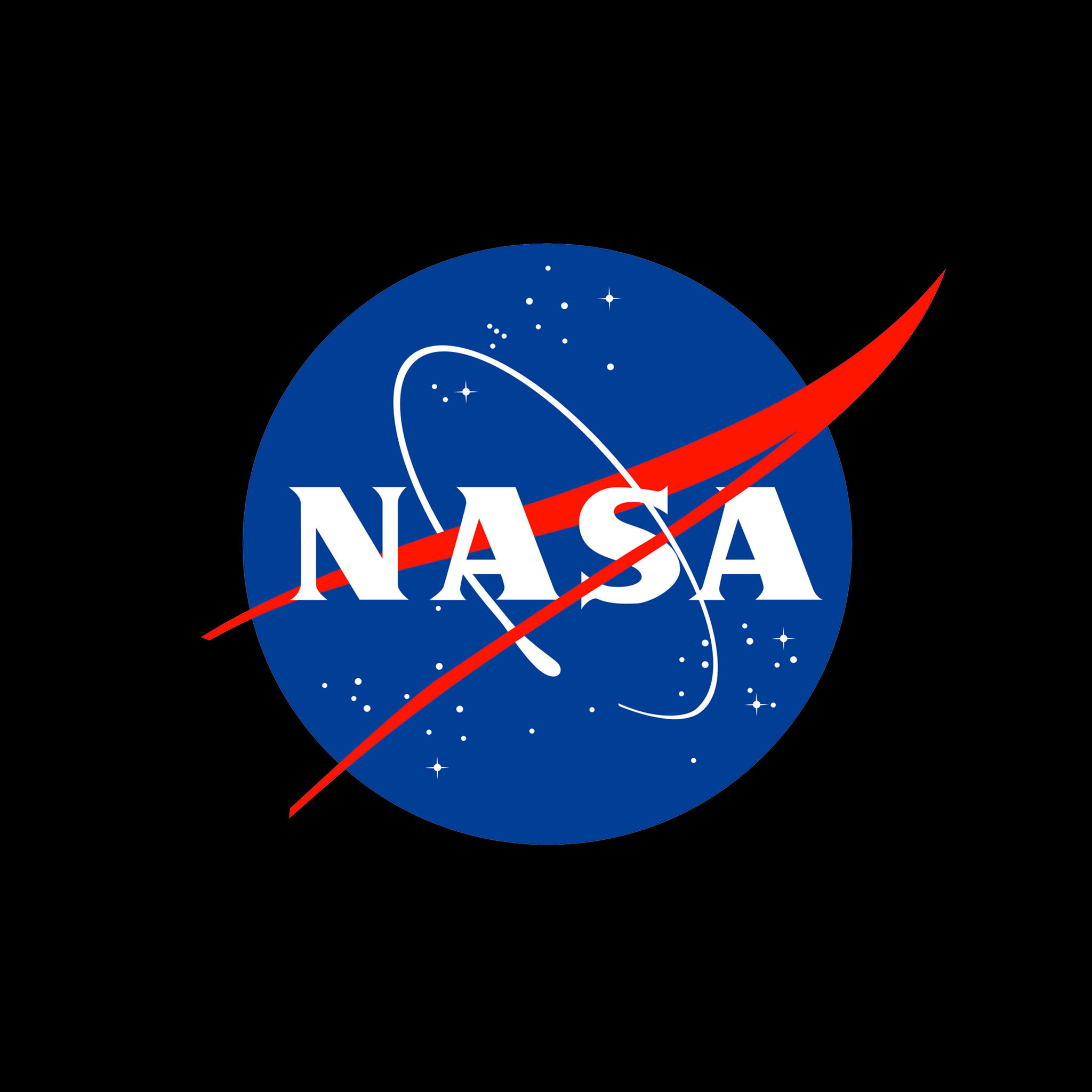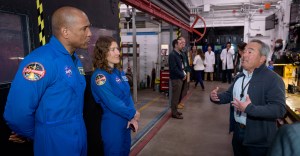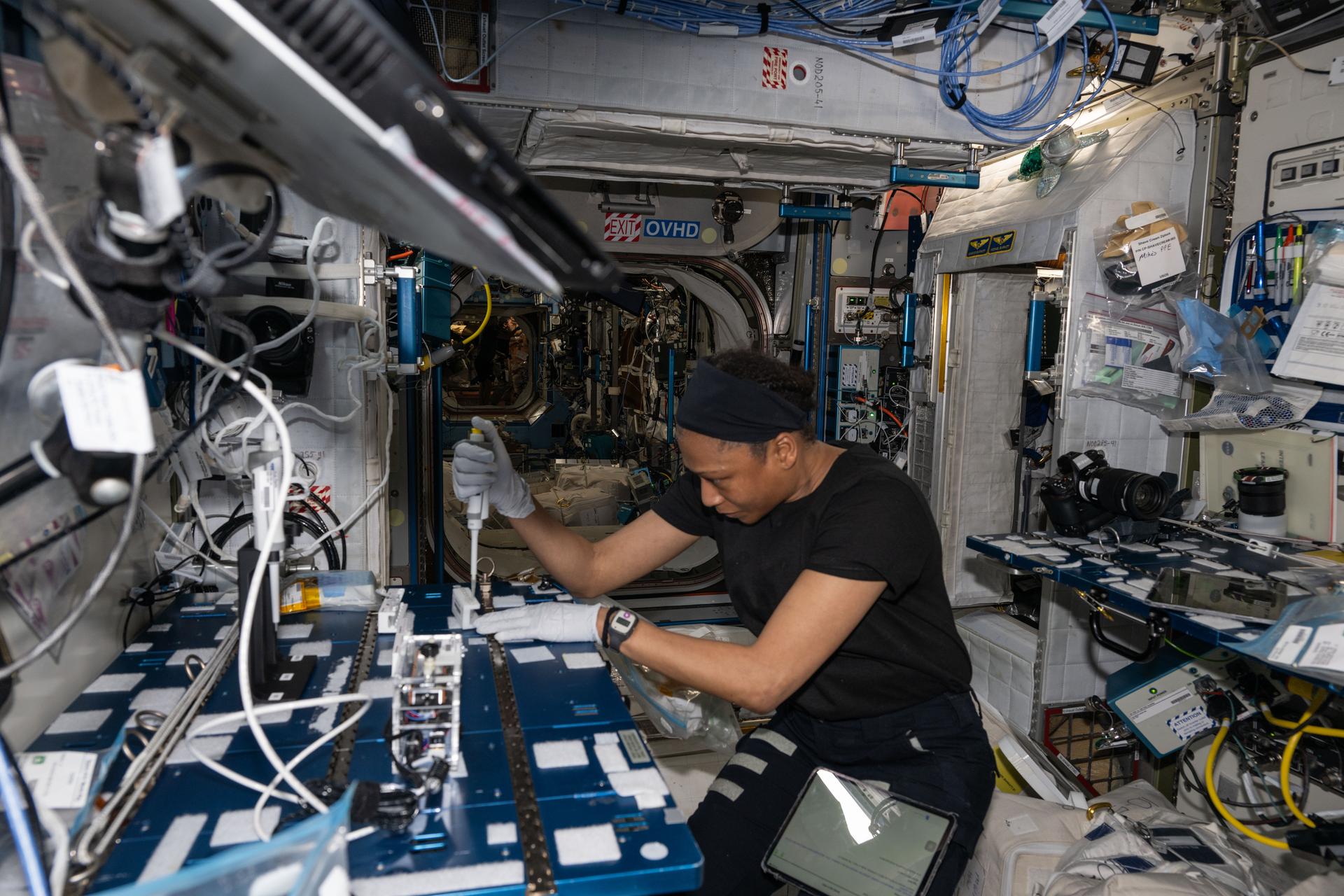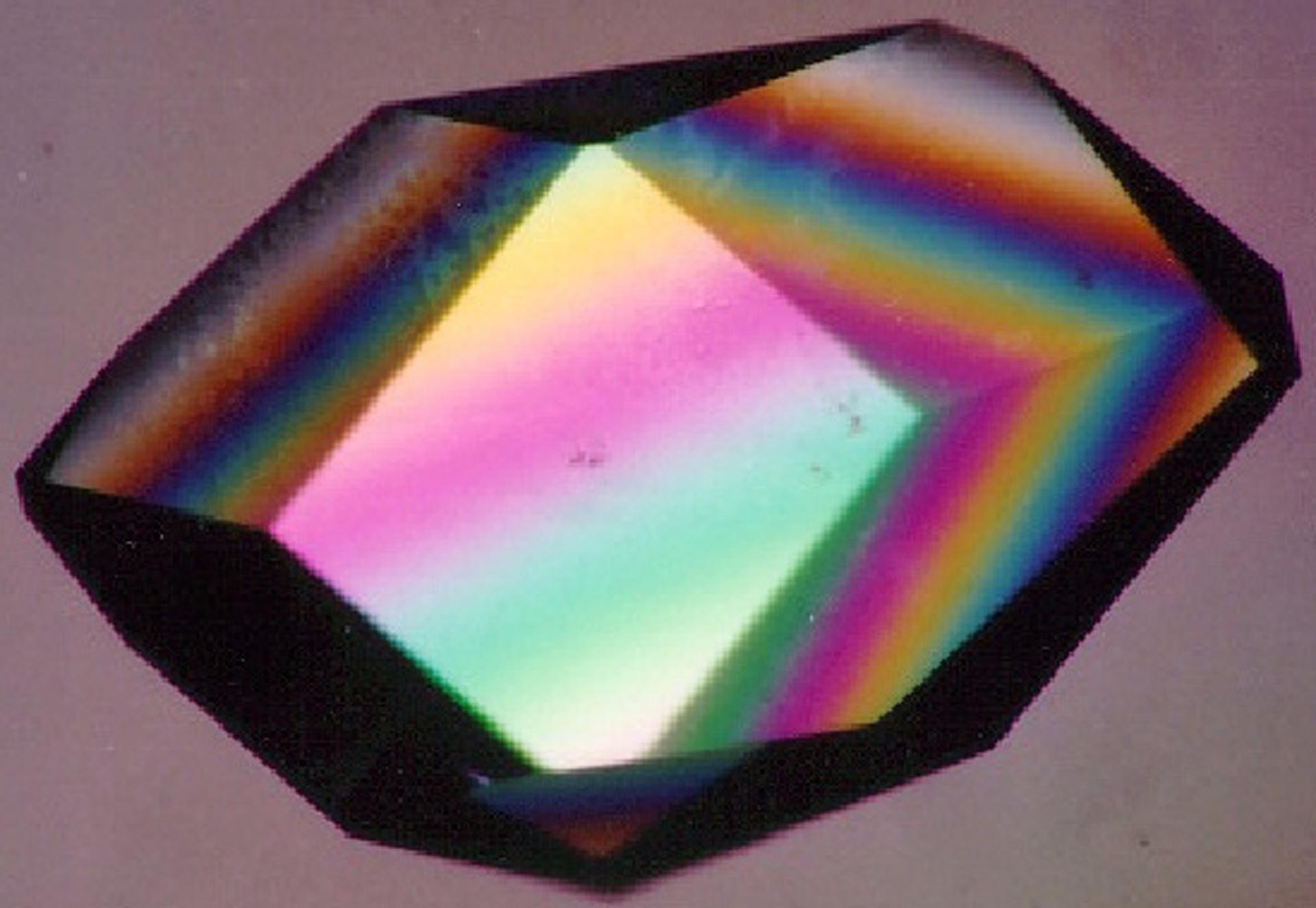3 min read Preparations for Next Moonwalk Simulations Underway (and Underwater) How do we do research in zero gravity? Actually when astronauts do experiments on the International Space Station, for instance, to environment on organisms, that environment is actually technically called microgravity. That is, things feel weightless, but we’re still under the influence of Earth’s gravity. Now, the very microgravity that we’re trying to study up there can make experiments actually really kind of difficult for a bunch of different reasons. First of all, stuff floats. So losing things in…
Read MoreTag: Biological & Physical Sciences
NASA Interns Conduct Aerospace Research in Microgravity
Explore This Section Science NASA STEM Projects NASA Interns Conduct Aerospace… Overview Learning Resources Science Activation Teams SME Map Opportunities More Science Activation Stories Citizen Science 3 min read NASA Interns Conduct Aerospace Research in Microgravity The NASA Science Activation program’s STEM (Science, Technology, Engineering, and Mathematics) Enhancement in Earth Science (SEES) Summer Intern Program, hosted by the University of Texas Center for Space Research, continues to expand opportunities for high school students to engage in authentic spaceflight research. As part of the SEES Microgravity Research initiative, four interns…
Read MoreUnearthly Plumbing Required for Plant Watering in Space
4 min read Unearthly Plumbing Required for Plant Watering in Space NASA is demonstrating new microgravity fluids technologies to enable advanced “no-moving-parts” plant-watering methods aboard spacecraft. Boeing Astronauts Sunita Williams and Butch Wilmore during operations of Plant Water Management-6 (PWM-6) aboard the International Space Station. Image: NASA Crop production in microgravity will be important to provide whole food nutrition, dietary variety, and psychological benefits to astronauts exploring deep space. Unfortunately, even the simplest terrestrial plant watering methods face significant challenges when applied aboard spacecraft due to rogue bubbles, ingested gases,…
Read MoreQuantum Sensing via Matter-Wave Interferometry Aboard the International Space Station
6 min read Quantum Sensing via Matter-Wave Interferometry Aboard the International Space Station Future space missions could use quantum technologies to help us understand the physical laws that govern the universe, explore the composition of other planets and their moons, gain insights into unexplained cosmological phenomena, or monitor ice sheet thickness and the amount of water in underground aquafers on Earth. Upgraded hardware being prepared at Jet Propulsion Lab for launch and install into the Cold Atom Lab on the International Space Station. The Science Module in the background enables…
Read MoreAtomic Clock and Plant DNA Research Launching Aboard NASA’s SpaceX CRS-32 Mission
NASA’s SpaceX 32nd commercial resupply services mission, scheduled to lift off from the agency’s Kennedy Space Center in April, is heading to the International Space Station with experiments that include research on whether plant DNA responses in space correlate to human aging and disease, and measuring the precise effects of gravity on time. Discover more details about the two experiments’ potential impacts on space exploration and how they can enhance life on Earth: “Second Guessing” Time in Space As outlined in Einstein’s general theory of relativity, how we experience the…
Read MoreWhy Do We Grow Plants in Space?
1 min read Preparations for Next Moonwalk Simulations Underway (and Underwater) Why do we grow plants in space? Plants are such versatile organisms that they can fulfill many roles in our exploration of space. Plants provide us with food, with oxygen, they can recycle water and waste, and they can even provide us with psychological benefits. So all these functions will help NASA in fulfilling our goal of trying to create a sustainable environment for human presence in space. But there are also other benefits. We can investigate how plants…
Read MoreWhat Are the Dangers of Going to Space? We Asked a NASA Expert: Episode 55
2 min read Preparations for Next Moonwalk Simulations Underway (and Underwater) What are the dangers of going to space? For human spaceflight, the first thing I think about is the astronauts actually strapping themselves to a rocket. And if that isn’t dangerous enough, once they launch and they’re out into space in deep exploration, we have to worry about radiation. Radiation is coming at them from all directions. From the Sun, we have solar particles. We have galactic cosmic rays that are all over in the universe. And those cause…
Read MoreNASA Sends Experiment to Space to Study Antibiotic-Resistant Bacteria
5 min read Preparations for Next Moonwalk Simulations Underway (and Underwater) Astronaut Jeanette Epps extracts DNA samples from bacteria colonies for genomic analysis aboard the International Space Station’s Harmony module. NASA In an effort to learn more about astronaut health and the effects of space on the human body, NASA is conducting a new experiment aboard the International Space Station to speed up the detection of antibiotic-resistant bacteria, thus improving the health safety not only of astronauts but patients back on Earth. Infections caused by antibiotic-resistant bacteria can be difficult…
Read More6 NASA Experiments on Materials, Benefitting Space and Earth
A Lysozyme crystal grown in microgravity, viewed under a microscope using X-ray crystallography. NASA Did you know that NASA conducts ground-breaking research in space on materials like metals, foams, and crystals? This research could lead to next-generation technology that both enables deep-space exploration and benefits humanity. Here are six studies scientists have conducted on the International Space Station that could have profound implications for future space travel and also improve products widely used on Earth: 01 Advancing construction and repairing techniques with liquid metals Researchers are looking at the effects…
Read MoreNASA Seeks Proposals for Space Biology and Physical Sciences Research
On Dec. 19, 2024, NASA released two amendments to the NASA Research Announcement Research Opportunities in Space and Earth Sciences (ROSES) 2024 (NNH24ZDA001N) to announce the E.9 Space Biology: Research Studies and E.12 Physical Sciences Research Studies program elements. Space Biology Proposals The research emphases of E.9 Space Biology: Research Studies fall under two broad categories: Precision Health and Space Crops For Precision Health-focused studies, investigators may propose to use any non-primate animal model system and any appropriate cell/tissue culture/microphysiological system/organoid or microbial models that are supported by the chosen…
Read More